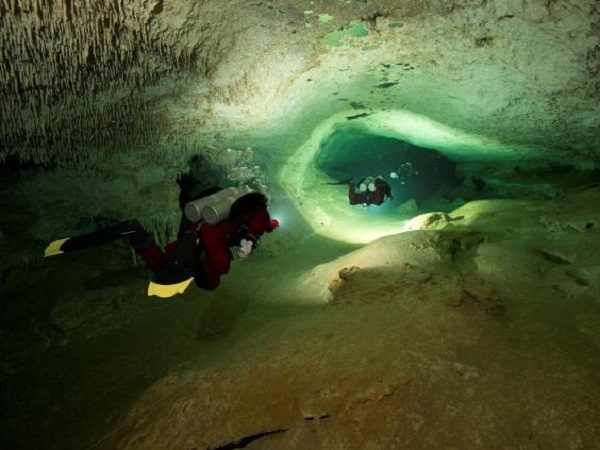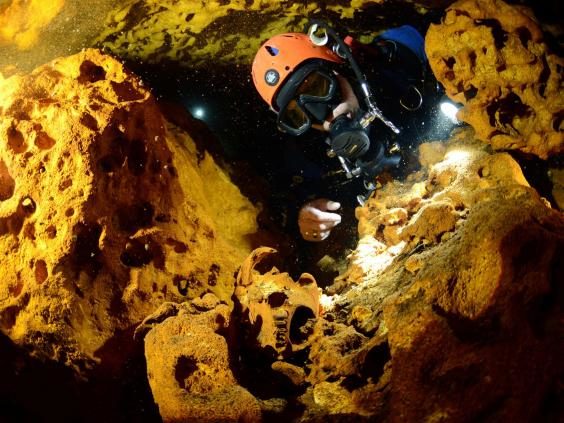
By connecting two underwater caverns, the Gran Acuifero Maya (GAM) project identified the 216-mile (347km) cave after months of exploring a maze of underwater channels.
The project, which is dedicated to the study and preservation of the subterranean waters of the Yucatan peninsula, said the discovery could shine new light on the ancient Maya civilisation.
Near the beach resort of Tulum, the group found that the cave system known as Sac Actun, once measured at 163 miles (263km), communicated with the 52-mile (83km) Dos Ojos system, the GAM said in a statement. Because of this, Sac Actun has now absorbed Dos Ojos.

"It allows us to appreciate much more clearly how the rituals, the pilgrimage sites and ultimately the great pre-Hispanic settlements that we know emerged," he told Reuters.
Mr de Anda and his team previously discovered what they believed was a hidden passageway beneath a 1,000-year-old Mayan temple.
The experts thought the tunnel under the Kulkulcan pyramid, which is part of the Chichen Itza archaological site in Yucatan, could lead to a natural sinkhole linked to subterranean waters, known as a cenote.
The Yucatan peninsula is studded with monumental relics of the Maya people, whose cities drew upon an extensive network cenotes.
Some cenotes acquired particular religious significance to the Maya, whose descendents continue to inhabit the region.
Several are thought to have been used by the ancient Maya for human sacrifices, and previous expeditions have found human bones in cenotes beneath Chichen Itza.



Reader Comments
Today I accidentally farted in the bathtub and hit my head on the ceiling!